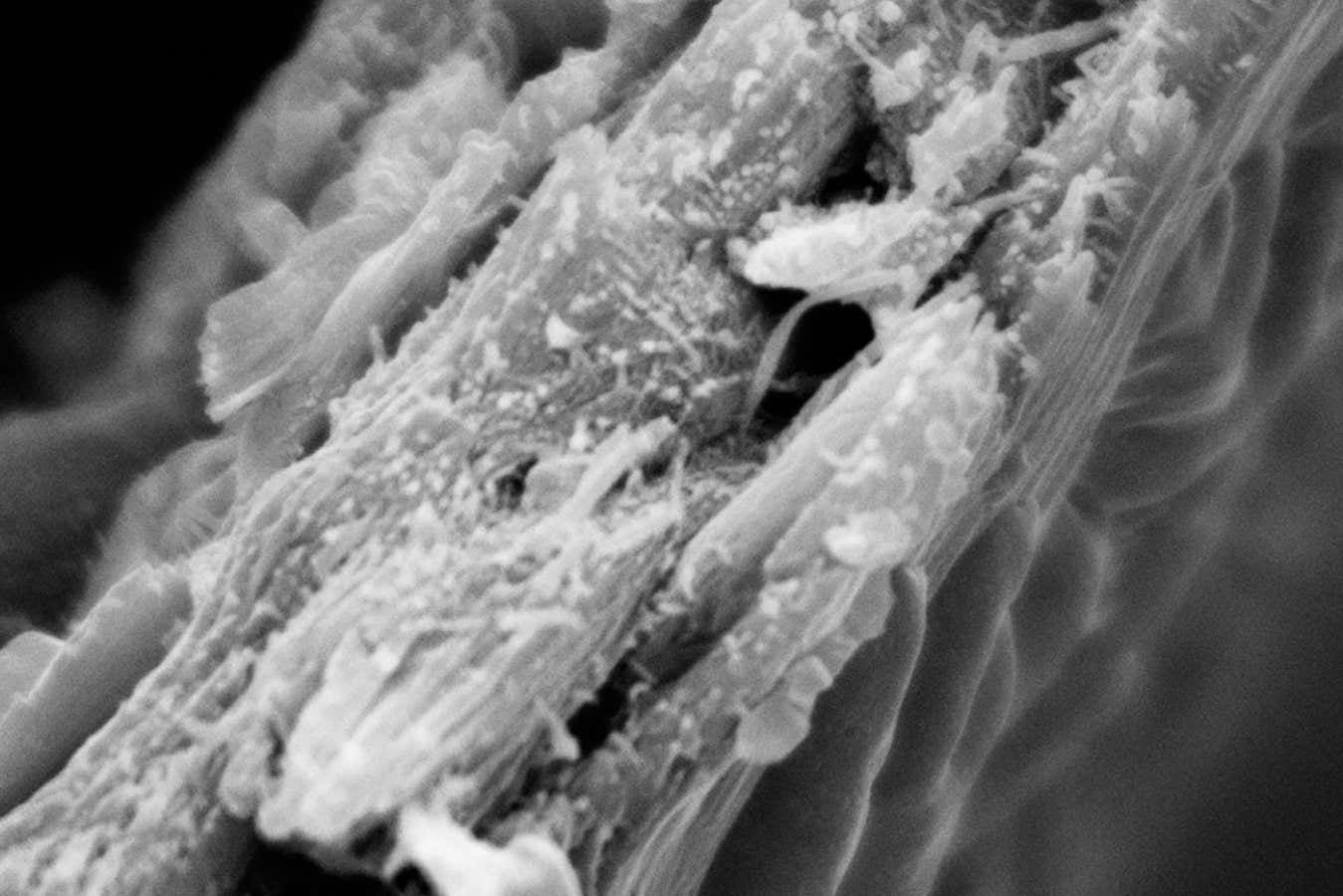
A scanning electron microscope image of nanoscale wood structures in tulip trees
Jan J Lyczakowski and Raymond Wightman
Scientists have discovered an entirely new kind of wood, a finding that could turbocharge the ability of trees to store carbon.
Tulip trees have a nanoscale wood structure that sits somewhere between hardwood and softwood, dubbed “midwood”, which may explain why they are so effective at storing carbon.
Jan Łyczakowski at Jagiellonian University in Poland and his colleagues investigated the nanoscale structure of live wood samples taken from 33 species of trees in the botanic garden at the University of Cambridge.
They froze each sample in a nitrogen “slush” that held them at a temperature of –210°C, before studying each one using a method known as low-temperature scanning electron microscopy. This allowed them to analyse the size of each wood type’s macrofibrils, tiny rod-like filaments that house wood cells.
They found that hardwood trees, such as oak or birch, have macrofibrils about 15 nanometres in diameter, whereas softwood counterparts, such as pine or spruce, have larger macrofibrils of 25 nanometres or more in diameter.
But there was one “surprise” exception, says Łyczakowski. The two surviving species of the Liriodendron genus, the tulip tree (Liriodendron tulipifera) and the Chinese tulip tree (Liriodendron chinense), had macrofibrils of around 20 nanometres, midway between the two types. “Liriodendron, for some unknown reason, has a different macrofibrial structure,” he says.
“We knew then there was something special about the liriodendrum,” says Raymond Wightman at the University of Cambridge.

The stunning colour of a Liriodendron tree in the autumn
garfotos/Alamy
Previous research has demonstrated that Liriodendrons are fast-growing with high carbon sequestration rates, making them popular candidates for plantations designed to capture carbon.
These trees diverged from their close relative the magnolias around 30 to 50 million years ago. This was a period in Earth’s history when atmospheric carbon dioxide concentrations dropped sharply from 1000 parts per million (ppm) to around 320ppm.
The trees may have developed larger macrofibrils to make them more effective at drawing carbon from the atmosphere as concentrations fell, suggests Łyczakowski. He now wants to test that idea by bioengineering trees to have midwood-sized macrofibrils and then checking their carbon sequestration rate. If it turns out midwood-sized macrofibrils are best suited for carbon sequestration, it may be possible to breed other tree species to have these to boost their carbon storing capacity, he says.
Topics:


Recent Comments